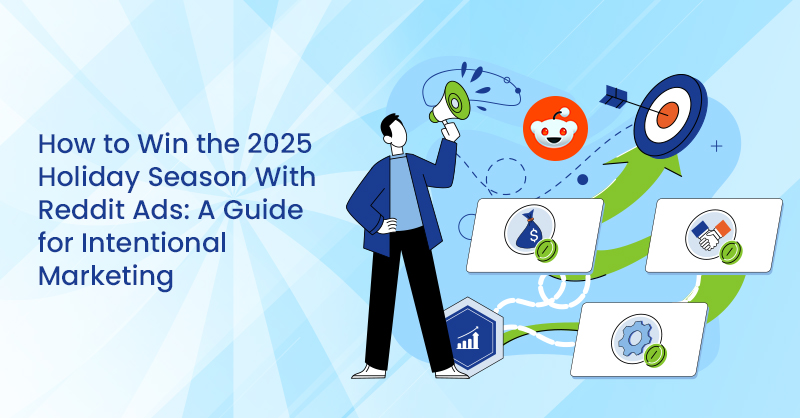Where’s that golden middle between quality versus quantity in any digital territory: search engine optimization (SEO), email, social media marketing, and others? Should you spray gallons of content (and, most probably, sacrifice quality) all over your marketing campaigns in 2025 and years to come? Or should you invest in high-quality content and distribute it in micro-doses?
As disappointing as it may sound, there are no straightforward “yes” or “no” answers to the last two questions. But let’s look at a couple of facts proving that the quality-over-quantity approach is picking up steam in marketing strategies:
- Fact #1. 83% of marketers believe it’s more effective to produce higher-value content (but less often) than lower-quality content (but more often).
- Fact #2. The social posting volume slightly decreased to 9.5 posts daily on average across all channels in 2024 among brands.
Yet, it’s more complicated than it seems, and in some cases, quantity outperforms quality (you’ll see when exactly). That’s why we’ve prepared this guide on striking the right balance between quality and quantity in marketing for 2025 and beyond. Read it to understand when less (but valuable) is more and when more is actually more and how to find your marketing sweet spot between the two without breaking the sales funnel (and the bank!).
When Is Quality More Significant than Quantity in Today’s Marketing?
To Gain Long-Term Trust Through Value
In the words of Adrian Iorga, Founder & President at 617 Boston Movers, “Customer trust isn’t something you can hack or hustle your way into. It’s earned gradually—post by post, day by day. And if you’re planning to boost your brand’s credibility and weave tighter bonds with your customers on social media, you have to give more useful, top-of-the-line content before you try to get something in return. And that? That’s the sort of connection that grows relationships for the long term, not just for one interaction.”
It can be:
- Step-by-step guides or “how-someone-did-something” stories (say, for your LinkedIn Pulse)
- Video tutorials
- Free tools/resources
- Templates
- Case studies
- Podcasts
- Webinars, etc.
For example:
Choosing quality over quantity in B2B, the Cleverly.co team typically shares how-tos, templates, and lists for long-term social media strategy and trust-building via email as well.
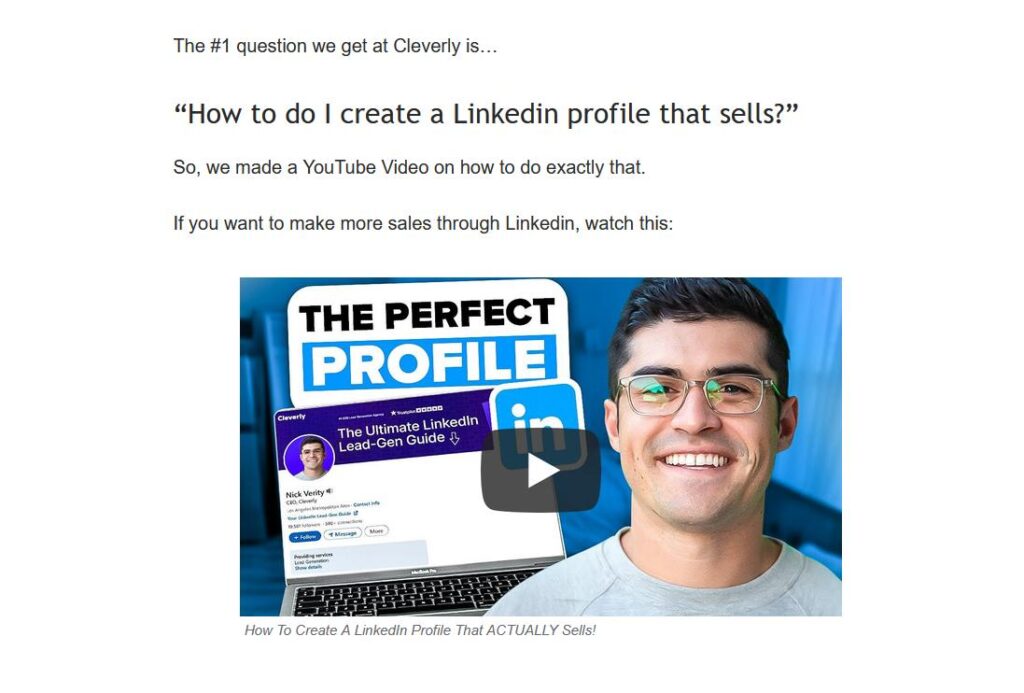
To Introduce New Products or Services
Whether it’s a beauty item in B2C or a tech tool in B2B, you don’t have to create too many promotional images or videos to market a new product. “One substantial newsletter or one high-quality picture or video demonstration for social media may be enough, as soon as it does its job—fully introduces the new product/service (or feature),” claims Nicolas Breedlove, CEO at PlaygroundEquipment.com.
For example:
The company adheres to the quality-over-quantity principle when introducing new commercial play sets to the market across social media channels.
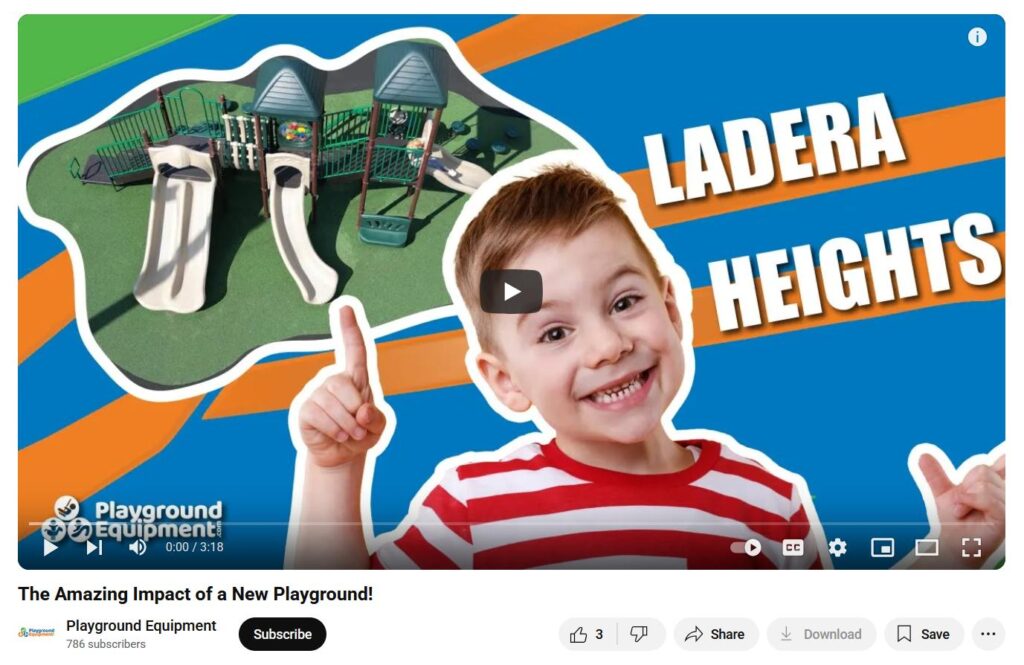
Source: YouTube.com
To Tap Into Niche Marketing
Let’s face it—target audiences in very specific niches despise generic content. They would also dislike it if you constantly bombarded them with it via blog, email, social media, or other marketing channels.
Here, less is more (again, as long as “less” is mind-blowingly good), when you choose between quality and quantity in marketing to super-narrow niches like below:
- Yoga for seniors with limited mobility
- Retro gaming
- Pet tech for remote monitoring
- Vegan dieting
- Eco-friendly cosmetics
- Digital nomad travelling
For example:
If you’re in dental marketing, you wouldn’t talk about a healthy lifestyle overall with your audience. You need to share relevant content within your expertise: oral hygiene and teeth health.
When Should You Bank on Quantity over Quality in Today’s Marketing?
To Test What Works (and Implement It Later)
How do you know what marketing tricks work or what specific content converts your audience more effectively?
By testing and analyzing data, of course.
Actually, at this rate, quantity surely wins as it feeds data-driven content marketing strategies. It goes like this: the more content to test → the more data for analysis → the more profound statistical insights.
For example:
Let’s take the home improvement industry. You can test what blog posts perform better and have higher conversion rates on your website: before-and-after transformations vs. house renovation guides. However, to determine this, you need to publish both types of articles frequently enough to see which one engages your audience better.
To Make Your Brand More Recognizable
If you’ve ever heard a jingle ten times and then couldn’t throw it out of your head, even if you wanted to, then you know the equation: repetition = retention. So, the amount matters more in the “quality vs. quantity” comparison for content memorability.
Let’s look at the following oft-repeated slogans literally everyone recalls along with the brand’s name:
- Just Do It (Nike)
- Gives You Wings (Red Bull)
- Open Happiness (Coca-Cola)
- I’m Lovin’ It (McDonald’s)
- Have a Break. Have a KitKat. (KitKat)
And then, they gave rise to catchy hashtags!
For example:
KitKat always publishes content with the hashtag #HaveABreak to increase brand recognition on social platforms.
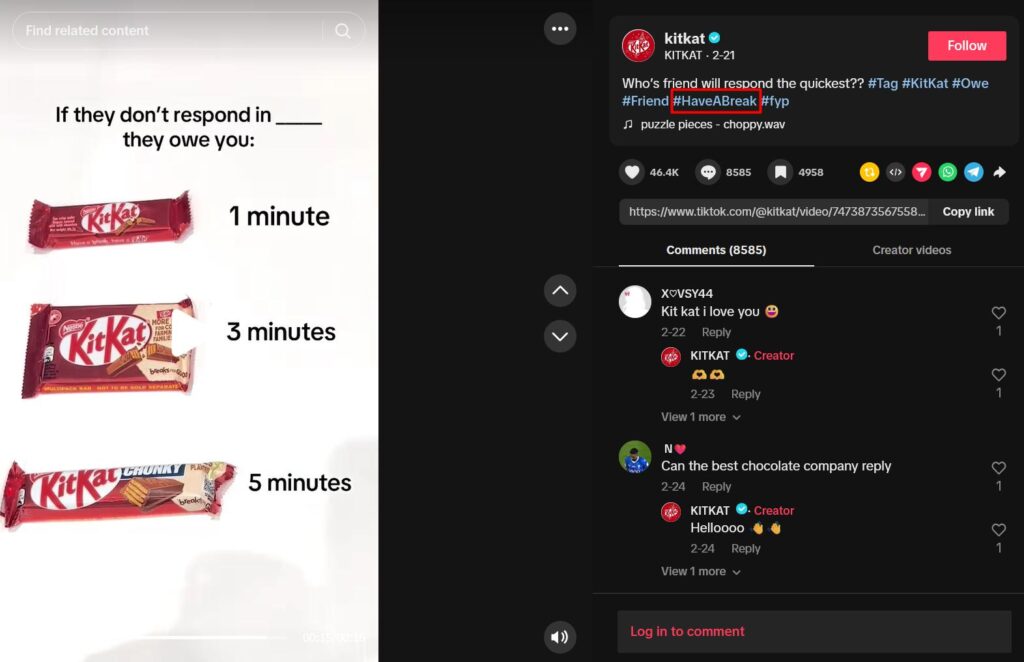
Source: TikTok.com
To Go Viral on Social Platforms
Well, you may argue that no one knows the exact formula for social media virality. (Yes, we’re still figuring out why that short video of a dog getting a fresh trim went viral with over 211M views and 5.6M impressions on Facebook in 2023.)

Source: Facebook.com
But!
Lacey Jarvis, COO at AAA State of Play, points out, “The more posts you create for your social media marketing strategy, the more ‘lottery tickets’ you’re holding. That is, your chances are higher to get picked up by algorithms and catch the virality wave.”
So, the battle of quality vs. quantity in marketing is definitely in favour of the latter here.
How to Strike the Right Balance Between Quality and Quantity in Modern Marketing Strategies
Prioritize Each Depending on Your Objectives
To ideally balance quality vs. quantity, you need to exactly know your purpose: What is your 2025 content marketing strategy for?
As a seasoned expert in the industry, Morgan Taylor, Co-Founder of Jolly SEO, focuses on content goals for search engine optimization as part of marketing. “If it’s for on-page SEO, you can’t utterly discard the quantity factor when choosing keywords because it’s critical for keyword density and search ranking. You need to make sure your web pages have enough targeted keywords, without sacrificing quality, of course.”
For example:
Take a glance at this page featuring online doctors in Ontario. It balances content relevancy and keyword frequency for local SEO, optimized with keywords like “Ontario-licensed online doctors” or “online doctor in Ontario.”
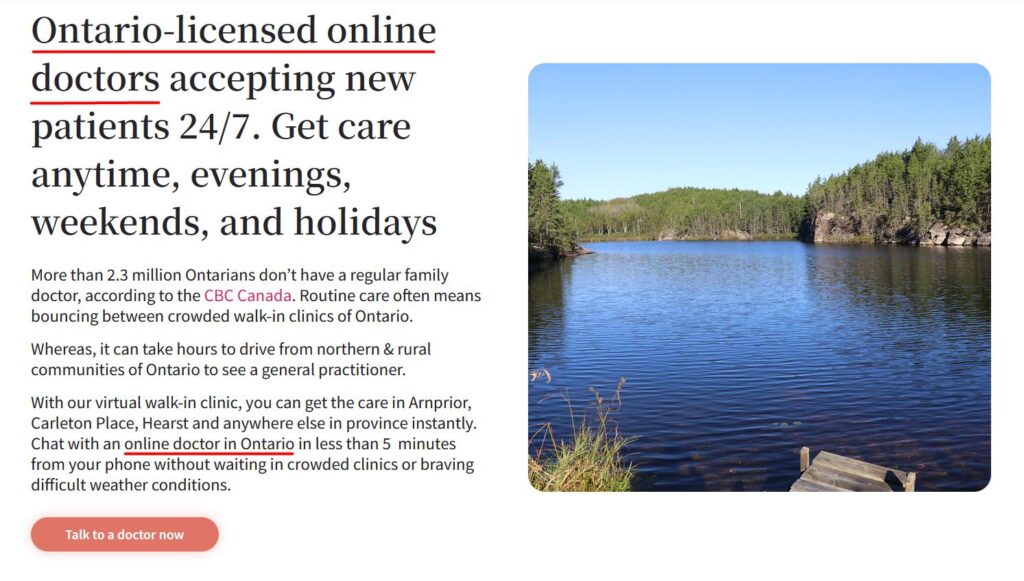
But when it comes to influencer marketing, for instance, Taylor notes, “You wouldn’t want to spend the whole budget on too many sponsored posts from content creators. Here, it would be wise to prioritize quality over quantity. Collaborate with one or two carefully selected micro-influencers with smaller voices but more authentic impact in your particular niche.”
Use AI Tools Wisely (Especially Generative AI, Aka GenAI)
You can’t miss out on the advantages of AI in marketing strategies in 2025 (and most likely, decades ahead). That’s true. However, many brands that choose quantity over quality fall into the GenAI trap, facing the risks of bad AI-generated content.
So, consider the right AI tools for digital marketing with the best ways to use them for balancing quality vs. quantity:
- Generate content ideas: ChatGPT or BuzzSumo
- Design interactive emails: Stripo or Encharge.io (popular among SaaS marketers)
- Write engaging social media posts or ads: SocialBee or AdCreative.ai
- Optimize content for SEO: Semrush AI Toolkit or AISEO.ai
- A/B test your content: Abtesting.ai or HubSpot’s A/B testing kit
For example:
Let’s say you’re looking for the golden balance between quality and quantity of keywords for your PPC marketing campaigns. Why not opt for an AI-powered keyword research tool to discover enough relevant keywords among the top hitters, instead of overstuffing your ads with poor performers?
Repurpose Quality into Quantity (and Vice Versa) and Experiment with Formats
For Jarrod Epps, CEO at CPR Certification Labs, repurposing (and reformatting!) is a “marketer’s survival mode on a content-hungry digital arena of 2025.” He claims, “Today, this is a must-follow tactic in marketing. It helps brands not only maximize ROI by balancing high-effort and low-effort content but also meet people’s learning needs with different content-consumption formats. Some people prefer to read in-depth guides; others are skimmers looking for quick tips and checklists. Some are visual learners; others consume information mostly via audio on the go.”
In general, here’s how you can repurpose and reformat content to balance quality and quantity:
- A blog article into several image or carousel posts
- A lengthy video into short clips (YouTube Shorts, Instagram Reels, or TikToks)
- A podcast episode into opinion posts on LinkedIn or “hot quote” threads on Twitter/X
- A webinar into short blog posts or newsletters with expert tips
- A report or whitepaper into “Stat of the day” highlights
Then, on the flip side, you can accumulate bite-sized content pieces and transform them into one long-form blog post, ebook, email newsletter, etc. Or, say, when you have several smaller PDF docs or ebooks, you can combine them in one large pack.
For example:
BambooHR turned four previous ebooks into a small business bundle to use as a higher-value lead magnet for B2B leads on the website.
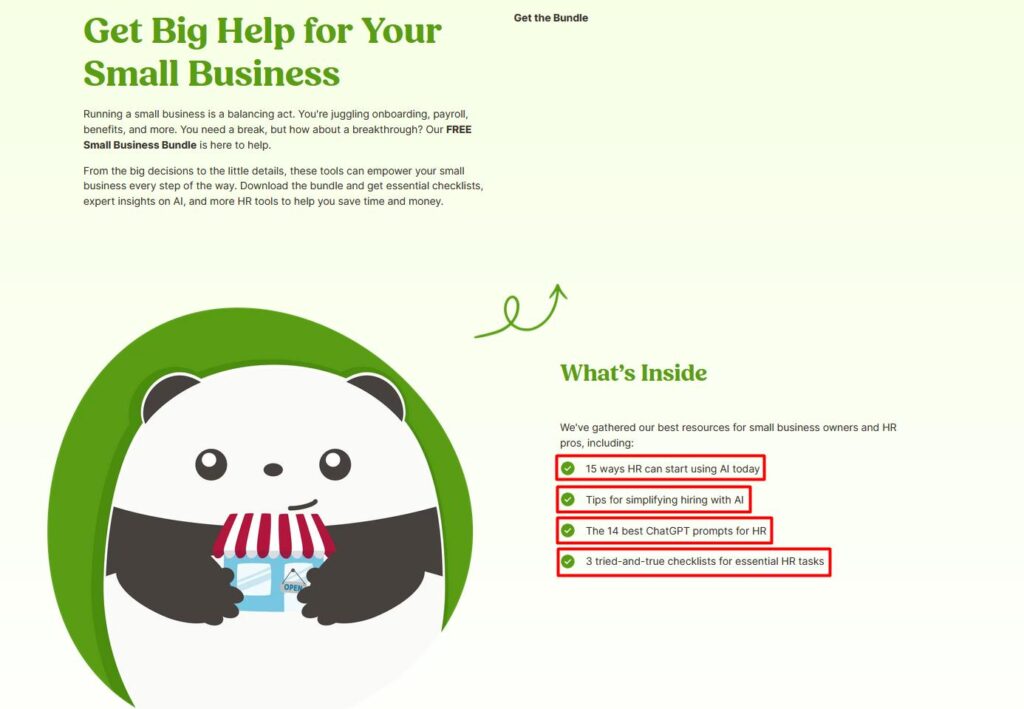
Source: Bamboohr.com
Ask Your Customers What They Think
How about just… asking your potential or existing customers?
Seriously, just ask them. The people who consume your content might know better what they actually prefer: quality vs. quantity (or both).
You may collect customer feedback via:
- Surveys/quizzes
- Feedback boxes
- Social media DMs
- One-click reactions with a sad/happy emoji
- Live chats or calls
For example:
Here’s how the financial brand captured the customer’s voice via email: “Do you like this newsletter? Take this short 10-minute survey to tell us what you think so we can provide you with more relevant resources.”
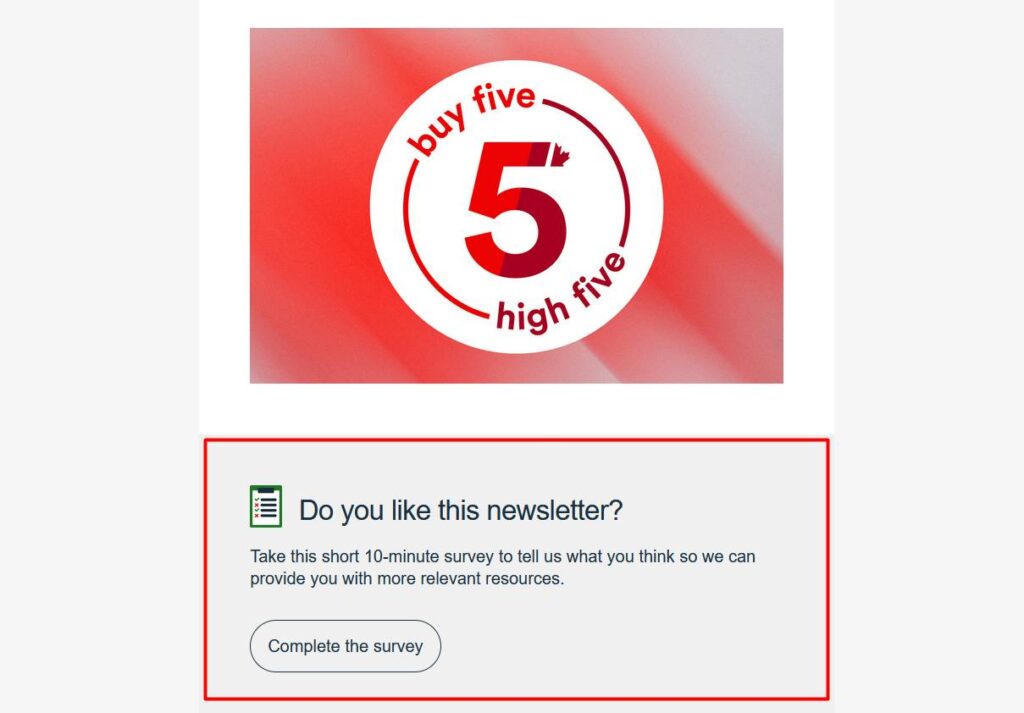
Besides, your customer service agents may also interview customers on their preferred content formats or frequency: videos vs. infographics, 1–2 longer vs. 3–5 shorter emails per month, and so on.
Keeping the Quality versus Quantity Balance in Your Marketing Strategy
So, here’s the TL;DR of it all.
You shouldn’t “pull the rope” only in one direction in this eternal “tug-of-war” between quality and quantity. Actually, the smartest marketers of 2025 play the middle ground. And primarily, their marketing goals and target audiences suggest where and how to pull.
In case you need assistance, book a free strategy consultation at TechWyse to level up your future marketing game with a well-balanced plan.



